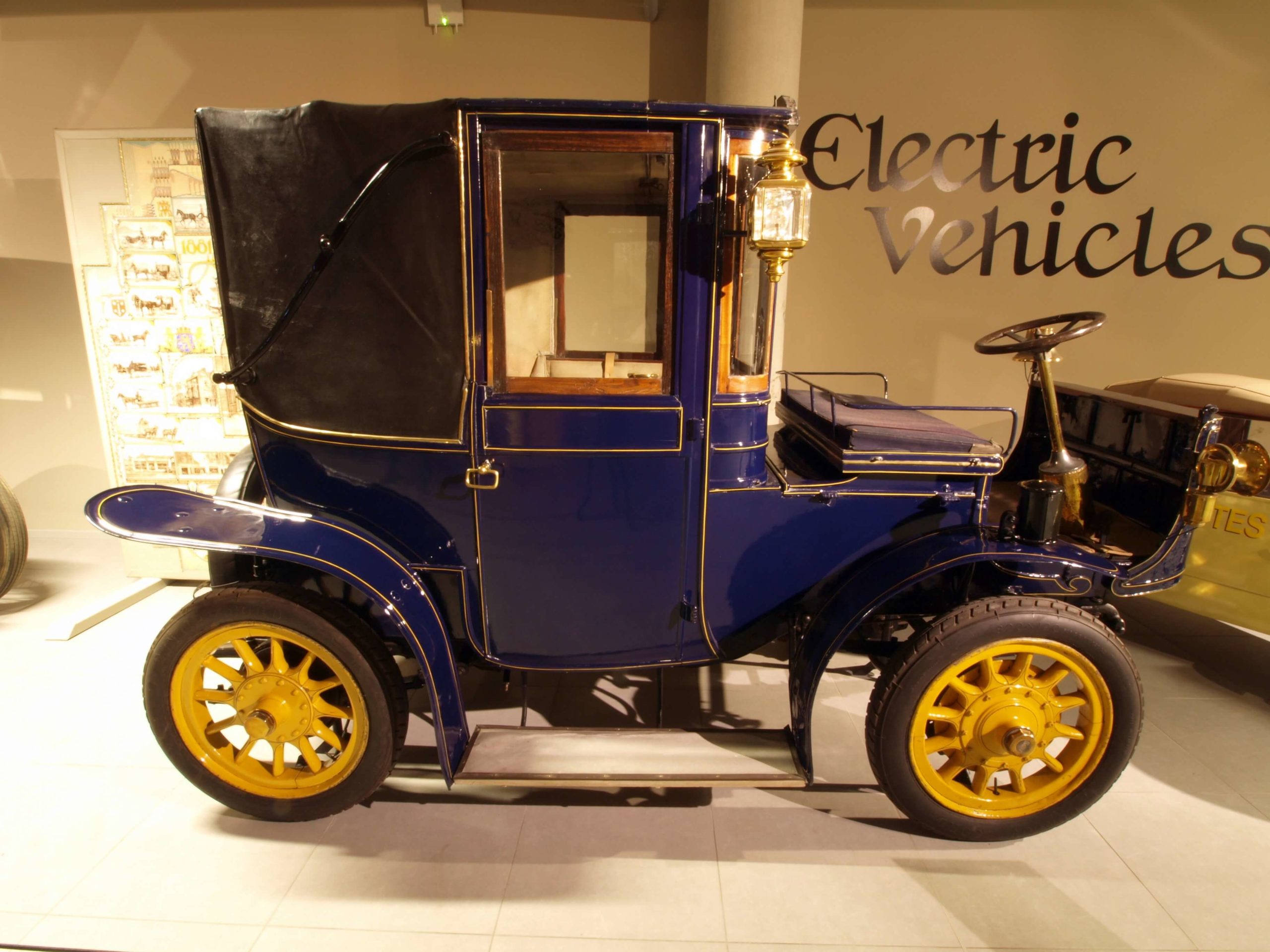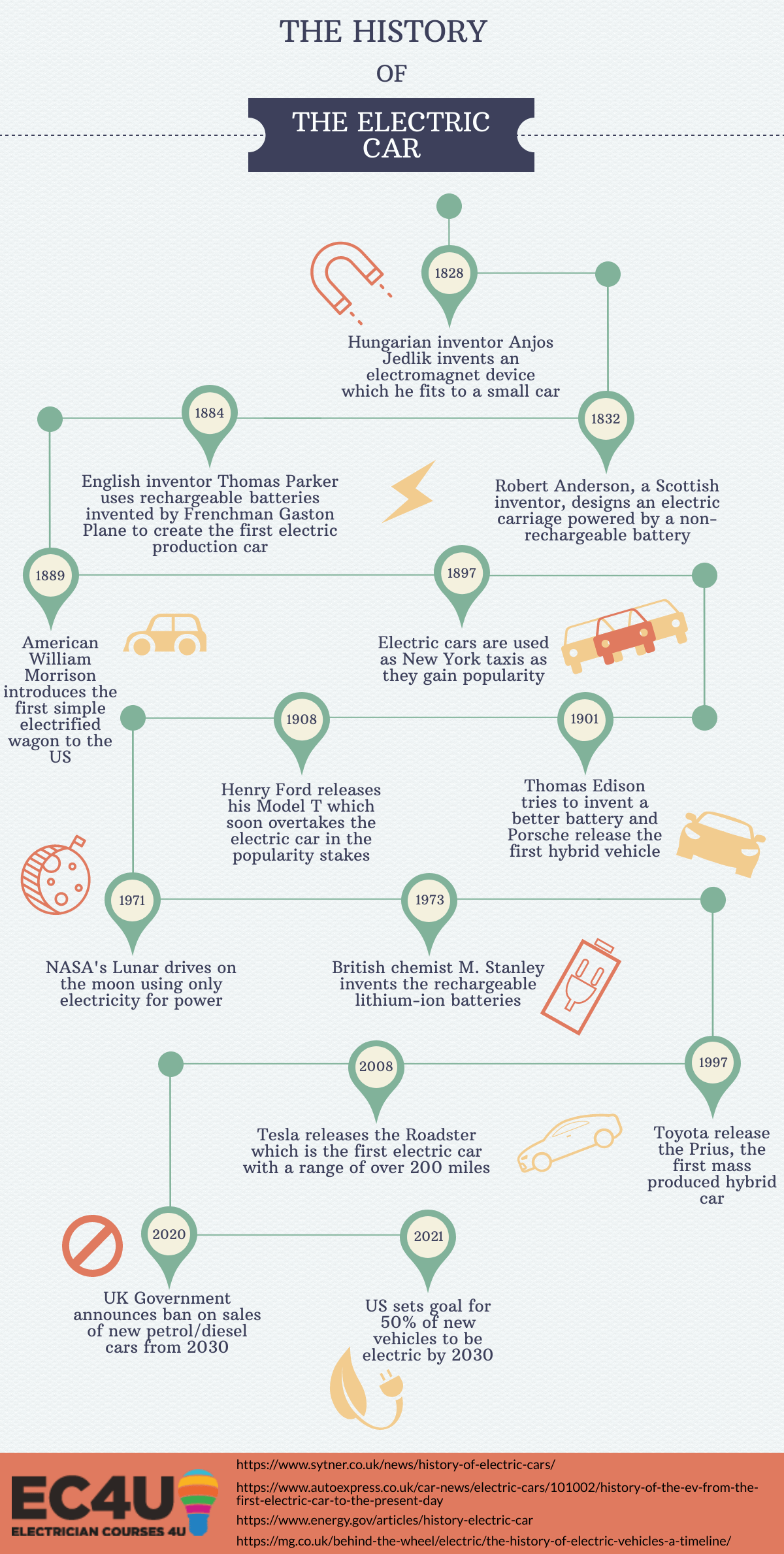The History of the Electric Car

The popularity of electric cars has been rising steadily in recent months, however, did you know that the concept of electric vehicles has been around since the Georgian times?
This is not the first time in history that electric cars have been thought of as an alternative to the current transport method. Over 100 years ago, the Victorian’s were looking to use electric vehicles as an alternative to horse drawn carts. The waste produced by the horses was polluting the streets and an alternative mode of transport was needed. In current times we are looking to implement electric cars as an answer to the growing climate crisis.

In the early 19th Century, a Hungarian priest, Anjos Jedlik retired from teaching at the age of 77. It was during his retirement that he built the first electromotor and used it to power a small locomotive. In the decades that followed, a British inventor called Thomas Parker invented an electric car that contained a rechargeable battery. This was a much welcomed invention for people looking for an alternative to horse drawn carriages. Horses produced an average of 10 kg of manure a day, and if you multiple that by the 300,000 horses that were working on London streets, that is a lot of manure to deal with! The build-up of waste was bad for people’s health and a different approach to transport was needed.

By the turn of the century, electric cars had gained real popularity, especially in the United States. It is estimated that in 1900, a third of cars in the US were electric and New York’s famous taxi fleet had at least 60 electric cars working around the city. However, this popularity was not to last long with the arrival of Henry Ford’s Model T in 1908. The shrinking price of oil and the development of mass production techniques meant that combustion cars became cheaper and soon became the better option, the popularity of electric vehicles started to fade.
Although, that wasn’t the end of electric vehicles in the early 1900s. With no hand cranking required to start the car, or gear shift to manage, electric vehicles were quickly marketed as the ‘women’s car’. The cars were suitable for short, local journeys and fairly reliable meaning car companies designed their marketing strategies to sell them as ideal cars for the women of the early 20th Century.

Over the next few decades there was a steady decline in the development and production of electric vehicles. However, the combination of rising oil prices and the use of electric vehicles on the moon saw an increased interest in developing new electric cars for the roads and a significant turning point occurred in the 1970s with the development of the rechargeable lithium ion battery. The combination of this new battery, with the growing issue of pollution and environmental issues saw more companies investing into the development of electric vehicles.
Since the start of the 21st century we have seen an ever growing electric vehicle market with the likes of Tesla developing luxury sports cars that can travel 200 miles plus, and other car manufacturers turning their well-known petrol and diesel models into new electric versions. With the UK and US governments both making pledges to eradicate the use of petrol and diesel vehicles in the coming decades will electric vehicles become our go to transport, or will we see a repeat of history if another alternative becomes available?
Back to blog



